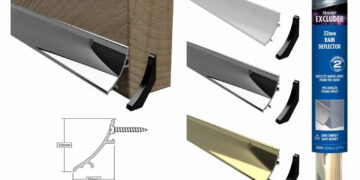Creative coders are more than just programmers—they’re digital artists who blend code with design, interaction, and innovation. Whether it’s a front-end developer fine-tuning visual details, a UI/UX designer crafting seamless user interfaces, a game developer optimizing graphics performance, or a visual artist building interactive media, the quality of their tools can significantly impact their work.
One of the most overlooked yet crucial elements for creative professionals is the laptop display. A high-resolution, color-accurate, and smooth display doesn’t just make visuals look better—it enhances workflow, reduces eye strain, and allows for precise design implementation. Even the best displays can become frustrating if technical glitches arise, so it’s equally important to know how to fix laptop issues that may affect performance or display quality. For creative coders, having both a powerful screen and the know-how to maintain it ensures uninterrupted, high-quality work.
What to Look for in a Creative Coding Laptop Display
Choosing the right display is essential for creative coders, as your screen directly affects how accurately you see and interact with your work. Here are the key features to consider:
Resolution: 4K vs. Full HD
- 4K displays (3840×2160) offer exceptional clarity and sharpness, which is particularly valuable for visual design, detailed UI elements, and multitasking with multiple windows.
- Full HD (1920×1080) is sufficient for general coding but may feel limiting for design-focused work.
- When 4K matters: If you work with detailed visuals, high-resolution assets, or need screen real estate, 4K is worth the investment.
Display Technology
- OLED: Delivers vibrant colors, true blacks, and higher contrast. Great for visual projects and creative apps but may consume more power.
- IPS (In-Plane Switching): Offers wide viewing angles and decent color accuracy, more budget-friendly than OLED.
- Touch vs. Non-touch: Touchscreens can be helpful for designers and illustrators, especially on 2-in-1 devices. However, non-touch displays are often more matte and better suited for glare-free work.
Refresh Rate
- 120Hz and above: Offers smoother motion, which is especially important for game developers, animators, and real-time visual coders.
- High refresh rates also reduce screen tearing and motion blur during development previews or prototype testing.
Color Accuracy & Gamut
- Look for screens that cover 100% sRGB, AdobeRGB, or DCI-P3 for color-critical work.
- Color accuracy ensures that what you design on screen appears true across devices, especially for branding, UI, and media projects.
Anti-Glare and Brightness
- A matte (anti-glare) display helps when working in bright environments or near windows.
- Brightness levels of 400 nits or more are ideal for clear viewing in various lighting conditions, both indoors and out.
Top Picks: Laptops with 4K Displays
Apple MacBook Pro (M3, 14” or 16”)
Display: The Liquid Retina XDR display (3024×1964 for 14”, 3456×2234 for 16”) uses mini-LED technology, delivering exceptional brightness (up to 1600 nits for HDR) and contrast. It covers 100% DCI-P3 with superb color accuracy, ideal for video editing, graphic design, and photography. The 120Hz ProMotion refresh rate ensures smooth scrolling and animation previews.
Performance: Powered by the M3, M3 Pro, or M3 Max chip, it offers a 10–12 core CPU and up to 38-core GPU, paired with 16–96GB of unified memory. This makes it a powerhouse for macOS-based creative workflows like Final Cut Pro, Xcode, and Adobe Creative Suite. Battery life lasts up to 18–22 hours, perfect for on-the-go developers.
Verdict: A top choice for macOS users needing a vibrant, high-resolution display and robust performance for creative and development tasks. Its premium price reflects its quality.
Dell XPS 15/17 (OLED Option)
Display: The 15.6” or 17” 4K UHD+ (3840×2400) OLED touch display offers deep blacks, infinite contrast, and 100% DCI-P3 coverage, making it excellent for color-critical tasks like photo and video editing. Brightness reaches ~400 nits, and the 60Hz refresh rate is sufficient for most creative work but less ideal for fast-paced gaming or animation.
Performance: Equipped with Intel Core i7/i9 (13th Gen) processors and NVIDIA RTX 4060/4070 GPUs, paired with 16–64GB RAM, it handles demanding tasks like 3D rendering, machine learning, and software development with ease. The XPS 15 offers ~10–12 hours of battery life, while the larger XPS 17 is slightly lower due to its power-hungry components.
Verdict: Perfect for professionals needing a premium Windows laptop with a stunning OLED display and strong performance, though its size and cost may deter budget-conscious buyers.
ASUS ZenBook Pro Duo
Display: Features a 15.6” 4K OLED main display (3840×2160) with 100% DCI-P3 and a 14” 4K ScreenPad Plus secondary touchscreen. The OLED delivers vivid colors and deep blacks, ideal for creative multitasking, while the ScreenPad Plus enhances productivity for designers and developers. The 60Hz refresh rate suits static visual work but isn’t optimized for gaming.
Performance: Powered by Intel Core i9 (12th/13th Gen) or AMD Ryzen 9, with NVIDIA RTX 4060 GPU and 16–32GB RAM, it excels in multitasking, video editing, and 3D modeling. Battery life is modest (~7–8 hours) due to the dual displays and high-end specs, so it’s better suited for plugged-in use.
Verdict: A unique dual-screen solution for multitaskers and creatives who need expansive visual real estate, though its weight and battery life limit portability.
Microsoft Surface Laptop Studio
Display: The 14.4” PixelSense Flow touchscreen (2400×1600) offers high contrast and 100% sRGB (close to DCI-P3), with excellent color accuracy for design work. The 120Hz refresh rate ensures smooth interactions, and stylus support (Surface Slim Pen 2) makes it ideal for sketching and note-taking. The display’s hinge allows laptop, stage, and tablet modes.
Performance: Features Intel Core i7 (11th Gen) or newer Snapdragon X Elite options, with NVIDIA RTX 3050 Ti or integrated graphics and 16–32GB RAM. It balances performance for development (e.g., Visual Studio) and creative apps (e.g., Photoshop), though GPU power is moderate for heavy 3D tasks. Battery life is ~16 hours, solid for a convertible.
Verdict: A versatile choice for designers and developers who value touchscreen flexibility and stylus support, with a vibrant display and decent performance.
Best Laptops with OLED Displays
OLED displays are known for their rich colors, deep blacks, and high contrast ratios—making them perfect for creative professionals who rely on visual fidelity. Here are two top-performing laptops with OLED screens that cater to the needs of creative coders:
1. ASUS ZenBook Pro Duo
- Why It Stands Out: This innovative laptop features a stunning 4K OLED main display paired with a secondary touchscreen called the ScreenPad Plus. The combination allows for seamless multitasking—perfect for coders running multiple IDEs, reference windows, or design previews.
- Display Highlights:
- 6″ 4K OLED HDR display with vivid color reproduction.
- Secondary 14” 4K ScreenPad enhances workflow efficiency.
- 100% DCI-P3 color gamut coverage.
- Best For: Creative coders working in UI/UX, motion graphics, or app prototyping who need screen space and precision.
2. Lenovo Yoga 9i (OLED Variant)
- Why It Stands Out: The Yoga 9i combines performance with portability, featuring a vibrant OLED display wrapped in a sleek 2-in-1 convertible design. Its Dolby Vision support and touchscreen functionality make it versatile for both coding and content creation.
- Display Highlights:
- 14” 4K OLED panel with exceptional contrast and brightness.
- Dolby Vision support for lifelike visual performance.
- Stylus-compatible touchscreen ideal for sketching or wireframing.
- Best For: Developers who also do video editing, digital illustration, or media-rich presentations.
Laptops with High Refresh Rate Displays (120Hz+)
For creative coders—especially game developers, animators, and UI testers—a high refresh rate display can make a big difference. Smoother visuals help with debugging motion-based features, rendering high-frame prototypes, or just improving the overall fluidity of your development environment. Here are two top laptops built to deliver:
1. Razer Blade 15 Advanced (240Hz or OLED)
- Why It Stands Out: A premium gaming laptop with a sleek design and powerhouse internals, the Razer Blade 15 Advanced offers both high refresh rate (up to 240Hz) and an OLED model—so you can choose between ultra-smooth or ultra-vivid displays depending on your workflow.
- Display Highlights:
- 6” Full HD 240Hz or 4K OLED touch options.
- NVIDIA RTX graphics card (ideal for rendering or simulation).
- Thin bezel, color-calibrated display.
- Best For: Game developers, 3D artists, and animation coders who need strong GPU performance alongside responsive visuals.
Bonus: Budget Options with Strong Displays
If you’re a creative coder working with a limited budget, you don’t have to sacrifice display quality. These budget-friendly laptops offer excellent screen performance—ideal for those who need color accuracy and clarity without the premium price tag.
Acer Swift 3 OLED
- Why It Stands Out: The Acer Swift 3 OLED delivers impressive visual quality in a compact, lightweight chassis—without breaking the bank.
- Display Highlights:
- 14” 2.8K OLED display (2880 x 1800 resolution).
- Vivid color output and deep contrast with 100% DCI-P3 coverage.
- Thin and portable, great for students or freelance developers.
- Best For: Entry-level UI/UX developers, blogging coders, or those focused on web and front-end work.
ASUS Vivobook Pro 14X
- Why It Stands Out: Known for its creator-focused features, the Vivobook Pro 14X balances affordability with a color-accurate display and powerful internals for light content creation and multitasking.
- Display Highlights:
- 14” 2.8K OLED display with 100% DCI-P3 and Pantone validation.
- NVIDIA GTX/RTX options for graphics processing.
- ASUS DialPad for creative tool navigation.
- Best For: Aspiring creative coders, graphic design students, or hybrid dev-creators who want premium visuals on a budget.
In creative development, your screen is more than just a window—it’s a workspace that shapes how you build, design, and interact with your projects. Whether you’re coding vibrant user interfaces, testing animation flows, or editing high-res visuals, display quality directly impacts both precision and productivity.
Laptops with 4K resolution, OLED technology, and high-refresh rate displays offer sharper details, deeper color accuracy, and smoother visuals. These features not only enhance the viewing experience but also help creative coders work more efficiently and comfortably.

























































